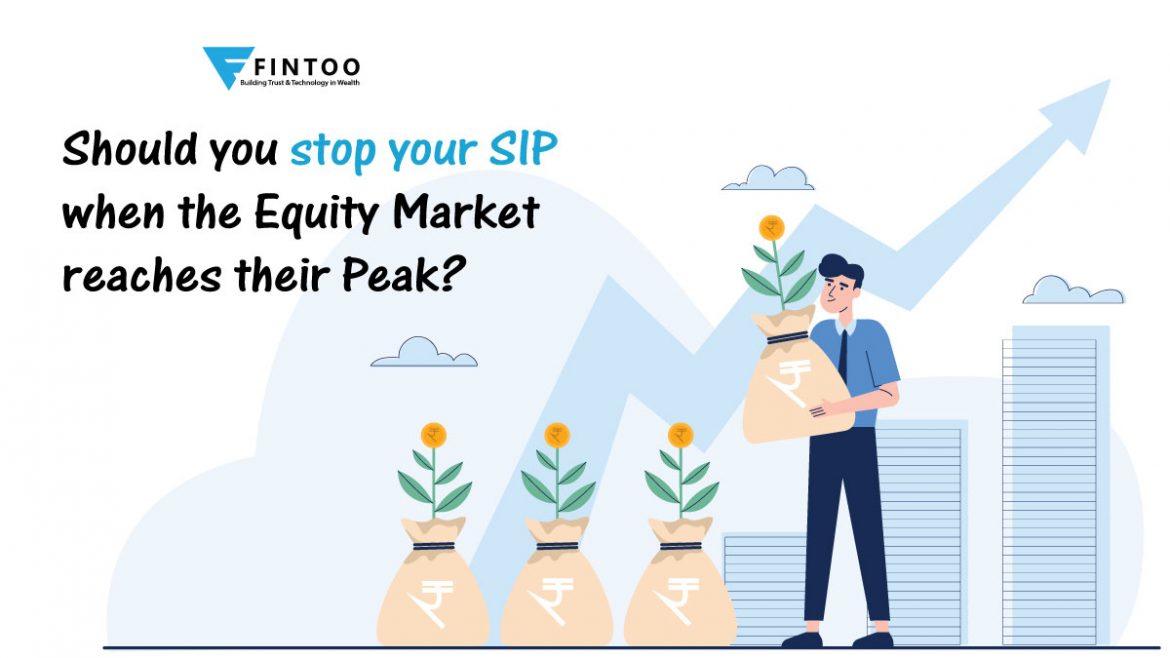

Nowadays, most investors consider SIP (Systematic Investment Plan) as a choice of investment. One of the most obvious reasons behind this is the transparency, simplicity, convenience and the power of compounding that mutual funds offer, especially to the investors who invest for the long term. However, SIP will help you not fall into the trap of timing your investment. It is one of the best modes to kickstart your investment and plan out your monthly budget.
Every investment starts to feel risky at a certain point, right? Often people face this dilemma: should we stop investing when markets reach their peak or continue as there is still potential? This article will give you a brief idea of what strategy you should follow if you face this dilemma.
Let us understand this with an Example!
Mr Manish regularly invests in SIP. Suppose if he would have initiated a SIP in the year 2017 when the Sensex was around 34,000 points, he would have reaped the benefits of the market rise until the first half of March 2020 when the Sensex was around 40,000 points. However, in the second half of March 2020, because of the pandemic, the market went down to almost 26,000 points.
So, if Manish had withdrawn his investment at the peak before the pandemic downtrend, he would have received a substantial return and would have also saved his investment when the markets crashed.
Moreover, this is just one part of the story, we are still stuck with the question, should we stop here or continue?
So, if Manish would have stayed positive throughout the downtime and continued this investment in SIP till December 2020 when the Sensex rose to almost 47,500 points, he would have not only recovered his losses but also received an unbelievable amount of returns.
Above all, even after all the ups and downs in 2020 and while the pandemic is still not over, the market managed to hit the all-time high of 60,000 points in September 2021.
Difficult to predict isn’t it? The market can turn upside down at any time. There is no mechanism for it. Investors often get stuck in dilemmas and face losses. If you were Manish what would you do?
Well, the answer is the power of Asset allocation! Asset allocation is a tool for young investors to effectively manage their risk. You should treat the high and low in the market as an opportunity! All you have to do is when markets are high, rebalance the portfolio and align it with other assets. In this way, you will be able to book profits and reduce the risk in your portfolio.
Conversely, when markets are low you can rebalance your equity portfolio again. This will not only translate to higher returns but also reduce the cost of your purchase. Rebalancing should be done only at regular intervals or when the market gives you the opportunity. It should be considered as a process and followed with rigorous timelines.
Remember “For any market-linked investment, your areas of investment, term of investment, discipline, consistency and market volatility plays a far more important role than just the point of entry or exit.” A longer running SIP is also at the mercy of market conditions. Hence the answer to this dilemma is to make your financial goal in the long run that you want to achieve. Plan Your SIPs accordingly and keep investing regardless of the market movements. Asset allocation is the best strategy to benefit from the market highs and lows.
“The Individual investor should act as an investor consistently and not as a speculator”
Must Read: How Young Investors Can Be Disciplined in Financial Life
A financial planning platform where you can plan all your goals, cash flows, expenses management, etc., which provides you advisory on the go. Unbiased and with uttermost data security, create your Financial Planning without any cost on: http://bit.ly/Robo-Fintoo
Disclaimer: The views shared in blogs are based on personal opinion and does not endorse the company’s views. Investment is a subject matter of solicitation and one should consult a Financial Adviser before making any investment using the app. Making an investment using the app is the sole decision of the investor and the company or any of its communication cannot be held responsible for it.
Related Posts
Stay up-to-date with the latest information.


